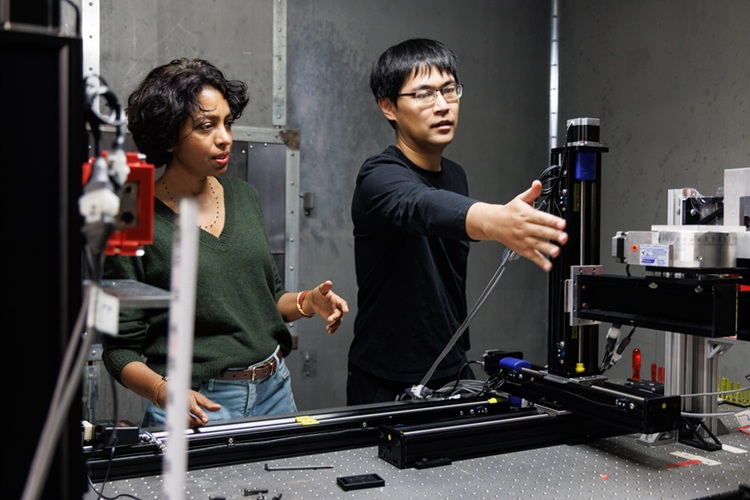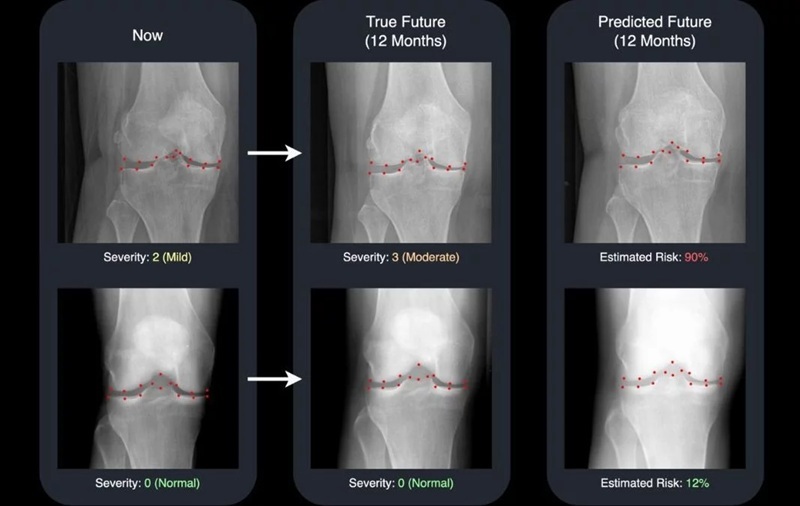3D Printed Heart Models Could Enable Non-Invasive Diagnosis of Aortic Stenosis
|
By MedImaging International staff writers Posted on 11 Apr 2023 |

Aortic stenosis is a condition characterized by calcified and thickened aortic heart valves, which impede blood flow. Existing methods for assessing the severity of aortic stenosis, like Doppler echocardiography, can be prone to uncontrolled errors and often necessitate invasive pressure measurements for patients. No, aortic flow phantoms could provide a potential solution to this issue.
Researchers at King’s College London (KCL, London, UK) have made progress in utilizing 3D printed heart models (phantoms) to simulate and investigate aortic stenosis. Computer modeling and 3D printing of aortic flow phantoms present an alternative to in vivo studies, which are associated with challenges in patient recruitment and potential procedural risks. In contrast, the simulated option allows for greater variations in blood pressure flow and drop. The researchers created a non-invasive technique for evaluating pressure recovery distance based on blood flow momentum using 4D Flow cardiovascular magnetic resonance (CMR). Their findings revealed that pressure recovery distances in aortic stenosis are longer than previously recognized, indicating a need to reevaluate currently adopted interventional practices.
Furthermore, the researchers developed and successfully tested a flow phantom compatible with MRI and ultrasound, which accurately simulates valve opening and closing in both healthy and diseased conditions and offers ground-truth pressure measurement. The team's findings suggest that the peak-to-peak pressure drop, a current metric for assessing the burden of aortic stenosis, may be influenced by factors unrelated to the valve, such as wave reflection, and should be reexamined in clinical practice.
“By developing valve models that behave like real human valves, new techniques which more accurately characterize the severity of disease can be developed and improved without disrupting patients' care,” said Harminder Gill, BM BCh.
“The decision on how and when to treat stenotic valves is complex and the diagnostic tools typically used in clinical routine have barely evolved during the past 50 years,” explained Joao Filipe Fernandes, PhD, Marie Skłodowska-Curie Early Stage Researcher in Personalized in-Silico Cardiology. “Thus, advances in the study of aortic stenosis patho-physiology are essential to provide a more comprehensive characterization of this condition. The non-invasive assessment of the pressure recovery distance allows the detection of invasive catheterization errors as well as understanding the vessel length required for hemodynamic homeostasis to be reached.”
“These advances will enable us to take well informed decision on the best balance between drugs and surgeries for people living with valve conditions,” added Prof. Pablo Lamata, Head of Cardiac Modeling and Imaging Biomarkers Group.
Related Links:
King’s College London
Latest MRI News
- Novel Imaging Approach to Improve Treatment for Spinal Cord Injuries
- AI-Assisted Model Enhances MRI Heart Scans
- AI Model Outperforms Doctors at Identifying Patients Most At-Risk of Cardiac Arrest
- New MRI Technique Reveals Hidden Heart Issues
- Shorter MRI Exam Effectively Detects Cancer in Dense Breasts
- MRI to Replace Painful Spinal Tap for Faster MS Diagnosis
- MRI Scans Can Identify Cardiovascular Disease Ten Years in Advance
- Simple Brain Scan Diagnoses Parkinson's Disease Years Before It Becomes Untreatable
- Cutting-Edge MRI Technology to Revolutionize Diagnosis of Common Heart Problem
- New MRI Technique Reveals True Heart Age to Prevent Attacks and Strokes
- AI Tool Predicts Relapse of Pediatric Brain Cancer from Brain MRI Scans
- AI Tool Tracks Effectiveness of Multiple Sclerosis Treatments Using Brain MRI Scans
- Ultra-Powerful MRI Scans Enable Life-Changing Surgery in Treatment-Resistant Epileptic Patients
- AI-Powered MRI Technology Improves Parkinson’s Diagnoses
- Biparametric MRI Combined with AI Enhances Detection of Clinically Significant Prostate Cancer
- First-Of-Its-Kind AI-Driven Brain Imaging Platform to Better Guide Stroke Treatment Options
Channels
Radiography
view channel
X-Ray Breakthrough Captures Three Image-Contrast Types in Single Shot
Detecting early-stage cancer or subtle changes deep inside tissues has long challenged conventional X-ray systems, which rely only on how structures absorb radiation. This limitation keeps many microstructural... Read more
AI Generates Future Knee X-Rays to Predict Osteoarthritis Progression Risk
Osteoarthritis, a degenerative joint disease affecting over 500 million people worldwide, is the leading cause of disability among older adults. Current diagnostic tools allow doctors to assess damage... Read moreUltrasound
view channel
Ultrasound Technique Visualizes Deep Blood Vessels in 3D Without Contrast Agents
Producing clear 3D images of deep blood vessels has long been difficult without relying on contrast agents, CT scans, or MRI. Standard ultrasound typically provides only 2D cross-sections, limiting clinicians’... Read more
Ultrasound Probe Images Entire Organ in 4D
Disorders of blood microcirculation can have devastating effects, contributing to heart failure, kidney failure, and chronic diseases. However, existing imaging technologies cannot visualize the full network... Read moreNuclear Medicine
view channel
PET Imaging of Inflammation Predicts Recovery and Guides Therapy After Heart Attack
Acute myocardial infarction can trigger lasting heart damage, yet clinicians still lack reliable tools to identify which patients will regain function and which may develop heart failure.... Read more
Radiotheranostic Approach Detects, Kills and Reprograms Aggressive Cancers
Aggressive cancers such as osteosarcoma and glioblastoma often resist standard therapies, thrive in hostile tumor environments, and recur despite surgery, radiation, or chemotherapy. These tumors also... Read more
New Imaging Solution Improves Survival for Patients with Recurring Prostate Cancer
Detecting recurrent prostate cancer remains one of the most difficult challenges in oncology, as standard imaging methods such as bone scans and CT scans often fail to accurately locate small or early-stage tumors.... Read moreGeneral/Advanced Imaging
view channel
3D Scanning Approach Enables Ultra-Precise Brain Surgery
Precise navigation is critical in neurosurgery, yet even small alignment errors can affect outcomes when operating deep within the brain. A new 3D surface-scanning approach now provides a radiation-free... Read more
AI Tool Improves Medical Imaging Process by 90%
Accurately labeling different regions within medical scans, a process known as medical image segmentation, is critical for diagnosis, surgery planning, and research. Traditionally, this has been a manual... Read more
New Ultrasmall, Light-Sensitive Nanoparticles Could Serve as Contrast Agents
Medical imaging technologies face ongoing challenges in capturing accurate, detailed views of internal processes, especially in conditions like cancer, where tracking disease development and treatment... Read more
AI Algorithm Accurately Predicts Pancreatic Cancer Metastasis Using Routine CT Images
In pancreatic cancer, detecting whether the disease has spread to other organs is critical for determining whether surgery is appropriate. If metastasis is present, surgery is not recommended, yet current... Read moreImaging IT
view channel
New Google Cloud Medical Imaging Suite Makes Imaging Healthcare Data More Accessible
Medical imaging is a critical tool used to diagnose patients, and there are billions of medical images scanned globally each year. Imaging data accounts for about 90% of all healthcare data1 and, until... Read more
Global AI in Medical Diagnostics Market to Be Driven by Demand for Image Recognition in Radiology
The global artificial intelligence (AI) in medical diagnostics market is expanding with early disease detection being one of its key applications and image recognition becoming a compelling consumer proposition... Read moreIndustry News
view channel
GE HealthCare and NVIDIA Collaboration to Reimagine Diagnostic Imaging
GE HealthCare (Chicago, IL, USA) has entered into a collaboration with NVIDIA (Santa Clara, CA, USA), expanding the existing relationship between the two companies to focus on pioneering innovation in... Read more
Patient-Specific 3D-Printed Phantoms Transform CT Imaging
New research has highlighted how anatomically precise, patient-specific 3D-printed phantoms are proving to be scalable, cost-effective, and efficient tools in the development of new CT scan algorithms... Read more
Siemens and Sectra Collaborate on Enhancing Radiology Workflows
Siemens Healthineers (Forchheim, Germany) and Sectra (Linköping, Sweden) have entered into a collaboration aimed at enhancing radiologists' diagnostic capabilities and, in turn, improving patient care... Read more






 Guided Devices.jpg)











